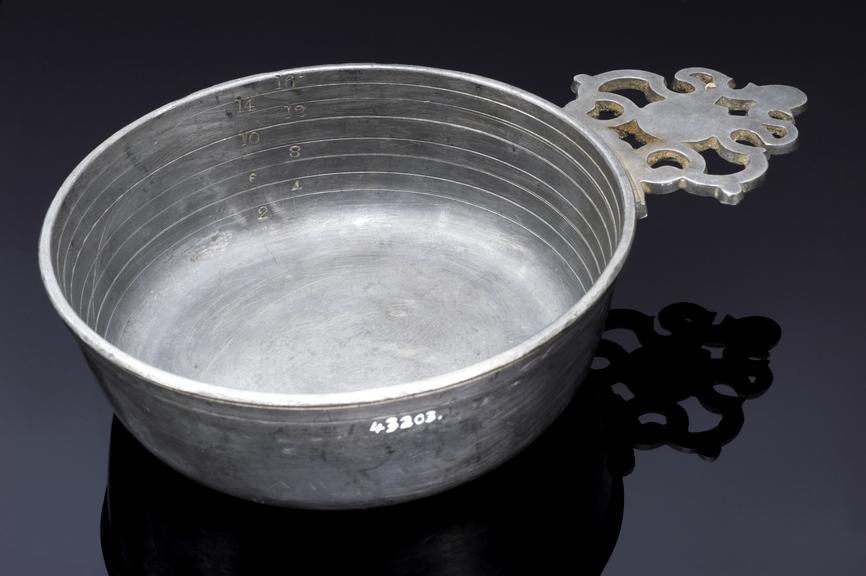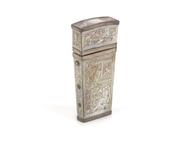


Pewter bleeding bowl, 1601-1900
Bleeding bowls were used to collect blood during bloodletting – a practice once carried out to treat a wide range of diseases and medical conditions. Bloodletting was used as cure for many fevers, diseases which were believed to be caused by a build up of blood.
This bowl is made from pewter and has a scale marked in fluid ounces engraved on the inside to allow accurate monitoring of the volume of blood being removed. One ounce is equal to 28.4 ml.
Details
- Category:
- Therapeutics
- Collection:
- Sir Henry Wellcome's Museum Collection
- Object Number:
- A43203
- Materials:
- pewter
- Measurements:
-
overall: 46 mm x 194 mm 132 mm, 0.432 kg
- type:
- bleeding bowl




